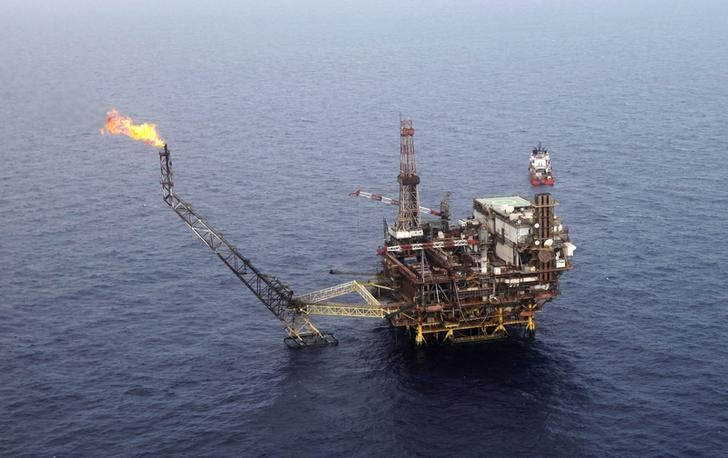By Henning Gloystein
SINGAPORE (Reuters) - Investors may have driven crude oil futures prices above $50 a barrel and amassed large bullish positions in expectations of further gains to come but their optimism isn’t shared by the people who produce, refine, ship or trade the real stuff on a daily basis.
They inhabit a very different world in which there is plenty of oil sloshing around and buyers can get cargoes of crude at discounts to their official selling prices. Neither do they see much of animpact anytime soon from plans by members of the Organization of the Petroleum Exporting Countries (OPEC) to cut production from record highs
Ian Taylor, chief executive of commodities trading giant Vitol, told Reuters this week that there is more physical crude around than the futures prices are indicating.
Global oil production has outpaced consumption since at least early 2015, with the current mismatch at about half a million barrels every day, according to data on Thomson Reuters’ Eikon.
Jeffrey Halley, senior analyst at brokerage OANDA warned that while the financial markets were becoming more confident, "the reality is the world is pumping a lot more oil than it uses."
Consequently, crude futures are trading at premiums to their underlying physical grades. Brent futures (LCOc1) are currently at a premium of about $2 a barrel to the main physical cargoes that underpin those contracts.
And in a further sign of a well-supplied market, Middle East crudes from the United Arab Emirates and Qatar last month traded in the spot market at discounts of as much as 25 cents a barrel to their official selling prices.
PRODUCERS HEDGING
Market data shows that just as financial traders have amassed long positions, producers have built up large short positions in the crude futures market. That helps them to hedge against any possible plunge in the prices of the crude they sell.
Some in the financial markets are taking notice.
Goldman Sachs (NYSE:GS) told clients this week that despite a production cut becoming a "greater possibility", markets were unlikely to rebalance in 2017, warning of another price fall to the low $40s per barrel. That would be a repeat of 2015 when financial markets pushed up prices just to slump back amid the ongoing glut.
Many investors, though, are betting on the days of oversupply ending within a few months. They are supported by energy economists and strategists at some of the other banks.
"The oil market is irrevocably gravitating towards equilibrium, leading to higher prices," said Hans van Cleef, senior energy economist at Dutch bank ABN Amro in a note to clients this week.
A collapse in the gold <XAU=> to oil price ratio supports the bullish sentiment.
The ratio between these two key commodities has plunged from 40 to below 25, and the head of oil research at Japan's Nomura bank, Gordon Kwan, said this implied either higher oil or lower gold going forward.
"One reason the gold/oil ratio spikes around periods of financial crisis is because oil prices tend to fall when economic growth is weak and investors are worried, while gold thrives in that environment," he added.
"Assuming gold stabilises at $1,250, if the gold/oil ratio hits 20x, this implies oil price could rise above $60 per barrel, consistent with our 2017 Brent crude average forecast," Kwan said.
Morgan Stanley (NYSE:MS) said this week that it expected Brent prices to rise from an average of $42 per barrel this year to $51 in 2017 and to $70 on average for 2018.
But, while the focus is on OPEC's proposed cut, with Russia possibly joining, others warn output is creeping up elsewhere.
Eikon data shows that the amount of U.S. rigs drilling for new production has steadily increased since May

"Productivity has surprised on the upside... and with the rig count slowly climbing upwards one can be cautiously optimistic that the U.S. shale industry is gearing up for a recovery," said Ted Young, chief financial officer of Dorian LPG, one of the world's biggest shippers of liquefied petroleum gas (LPG).